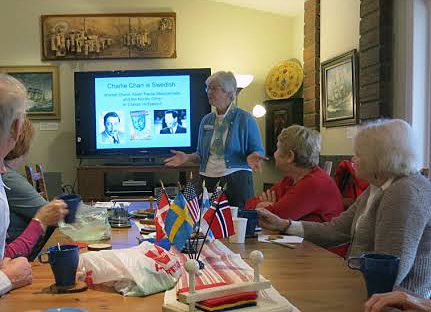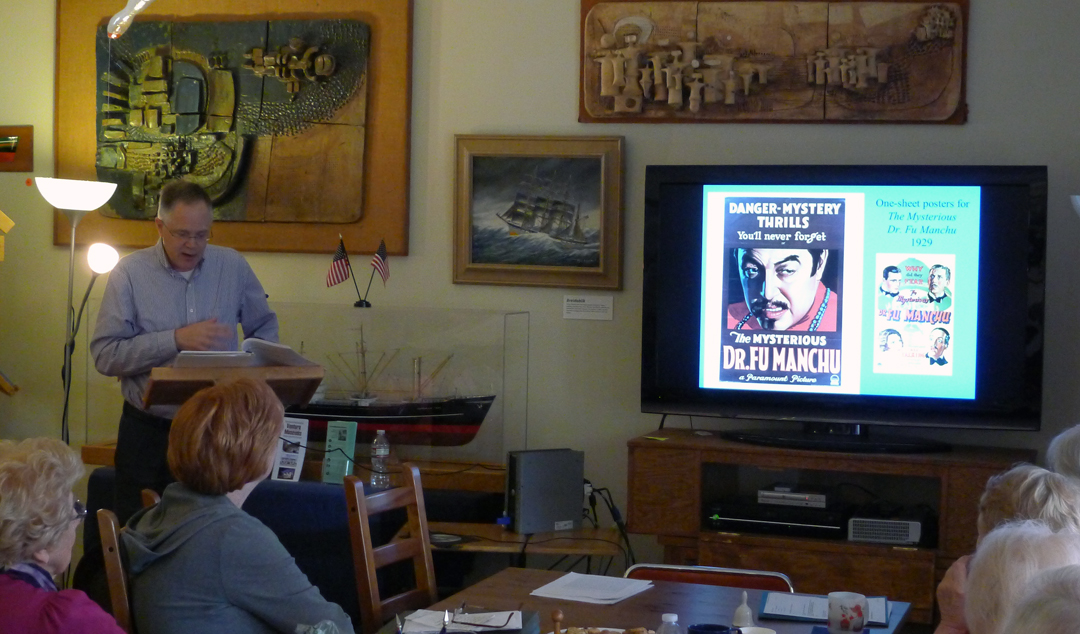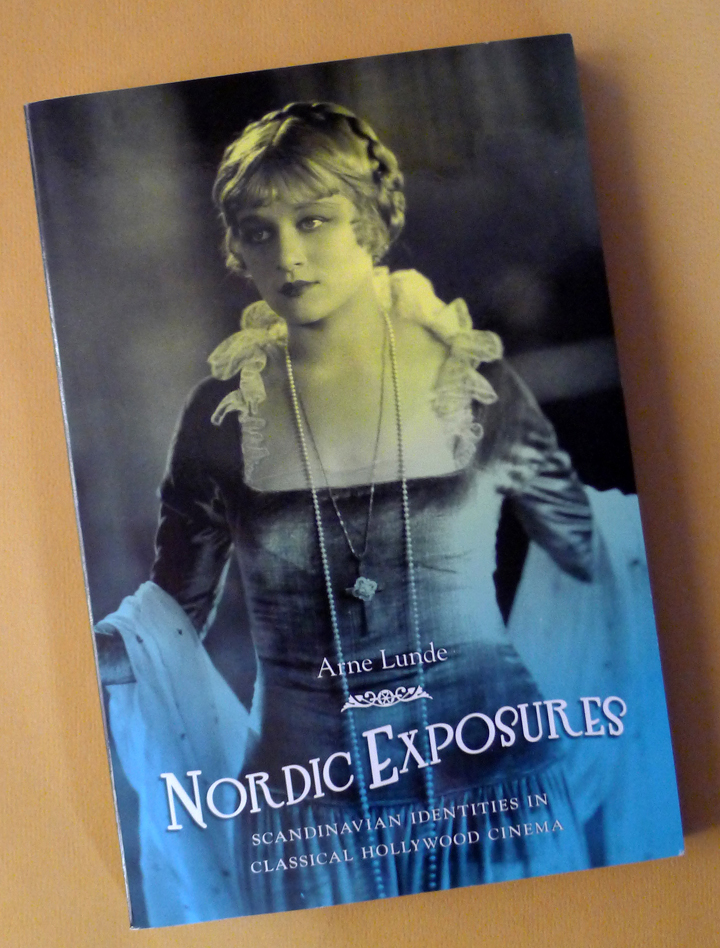The Chinese-Swedish Sleuth
A recent lunch program at California Lutheran University featured movie characters portrayed by Swedish actors
-
 Anita Hillesland Londgren, co-director of the Scandinavian Center and coordinator of the weekly Brown-Bag Lunch events, introduces the Jan. 8 presenter, Dr. Arne Lunde of UCLA.
Anita Hillesland Londgren, co-director of the Scandinavian Center and coordinator of the weekly Brown-Bag Lunch events, introduces the Jan. 8 presenter, Dr. Arne Lunde of UCLA. -
-
Chinese depicted by Swedish actors? That contradiction caught the attention of viewers at the Scandinavian Center when they looked at an early movie, Charlie Chan at the Opera.
In a later Brown-Bag Lunch program at California Lutheran University, viewers got an answer to the puzzle. Dr. Arne Lunde, head of the Scandinavian Section at UCLA, shed some light on Scandinavian actors in Hollywood.
He drew on his recently published book Nordic Exposures to reveal why Scandinavian-Americans were cast in such improbable roles. In his presentation, Lunde focused on Swedish-American Warner Oland as Charlie Chan in the early movies. With some “Hollywood help,” Oland resembled an Asian.
So how was this role believable and not seen as racist? Even as a Swedish Charlie Chan, said the UCLA professor, the Chinese detective earned a positive following because of his superior skills and kindly manner.
While portraying the Chinese detective in 16 movies in the ’20s and ’30s, Oland wasn’t considered unusual, partly because Asian actors weren’t even considered for casting—except in some minor roles. Consequently, Oland played the part of an Asian man in several other movies, added Lunde. He explained that other “white” actors—men and women—“became Asian” in a variety of movies. -
 Dr. Arne Lunde, head of the Scandinavian section at UCLA, shares a presentation about Scandinavian actors during a Brown-Bag Lunch meeting in the Scandinavian Center at California Lutheran University.
Dr. Arne Lunde, head of the Scandinavian section at UCLA, shares a presentation about Scandinavian actors during a Brown-Bag Lunch meeting in the Scandinavian Center at California Lutheran University. -
-
Considered northern 'Sami' Swede
Regarding Oland, some movie analysts declared that he seemed appropriate as an Asian because he came from northern “Sami” Sweden, and had darker hair and skin coloring. And, they speculated, perhaps he was part Russian as well as Slavic, making him look somewhat Asian.
In his “civilian” life, said Lunde, Oland preferred culture, not association with the movie community. And he accepted the Asian roles because “it was a job” during tough economic times for actors—as well as for countless others during the Great Depression. But a drinking problem haunted Oland for years and challenged his acting career at times.
He accepted other roles, especially when Hollywood shifted to choosing Asians to portray Asians.
To learn more about Scandinavians in film, purchase Nordic Exposures, available from a variety of bookstores. Recently written by Lunde and published by the University of Washington Press, it was donated to our collection by Lunde.
Lunde is a first-generation Norwegian-American who grew up in Seattle, where he earned an advanced degree in Scandinavian studies at the University of Washington. He expanded on that at the University of California in Berkeley, and taught Scandinavian languages and history at other universities prior to his present position at UCLA. -
 Nordic Exposures, written by Dr. Arne Lunde and published by the University of Washington Press, can be purchased at a variety of bookstores. The Scandinavian Center has a copy donated by Dr. Lunde.
Nordic Exposures, written by Dr. Arne Lunde and published by the University of Washington Press, can be purchased at a variety of bookstores. The Scandinavian Center has a copy donated by Dr. Lunde. -
For more info on the Scandinavian Center, http://scandinaviancenter.org/ at the California Lutheran University; www.callutheran.edu
-
-
-
